Exploration and production
Grupa LOTOS is engaged in exploration and production through the LOTOS Petrobaltic Group in the following countries:
- Poland – LOTOS Petrobaltic and its subsidiaries;
- Lithuania – AB LOTOS Geonafta and its subsidiaries;
- Norway – LOTOS Exploration and Production Norge AS.
The LOTOS Petrobaltic Group includes companies conducting support activities: the Miliana Group and Energobaltic Sp z o.o. The Miliana Group renders sea transport services to LOTOS Petrobaltic, while Energobaltic was established to manage associated gas produced from the B3 field and – in the future – from other hydrocarbon accumulations located in the Baltic Sea. At the Władysławowo CHP Plant, the company is involved in the production of electricity, heat, LPG and natural gas condensate, using associated gas from an offshore oil production facility (the B3 field).
{GRI OG1}
As at the end of 2013, crude oil reserves and resources held by the LOTOS Petrobaltic Group amounted to 8.08 million tonnes or 62.08 million boe (reserves classified as 2P), and 1.80 million tonnes or 13.63 million boe (resources classified as 2C), whereas its natural gas reserves and resources were 1.09 billion cubic metres (2P) and 6.49 billion cubic metres (2C).
Crude oil reserves classified as 2P (thousand tonnes)
Crude oil reserves classified as 2C (thousand tonnes)
Natural gas reserves classified as 2P (billion cubic metres)
Natural gas resources classified as 2C (billion cubic metres)
- Poland – Baltic Sea
LOTOS Petrobaltic is the only Polish enterprise engaged in hydrocarbons production in the Polish economic zone of the Baltic Sea. At the end of 2013, the company held:
- Nine licences for the exploration for and appraisal of crude oil and natural gas deposits, with two of them, Słupsk E and Słupsk W, obtained in 2013. The total area of LOTOS Petrobaltic’s licences is more than 8.5 thousand square kilometres.
- Four licences for hydrocarbons production:
- on the B3 field, for the production of crude oil and associated natural gas, located 73 km north of Rozewie; the process of extending the licence until 2026 is currently under way;
- on the B8 field, for the production of crude oil and associated natural gas, located 70 km north of Jastarnia; the field is currently being developed;
- on the B4 and B6 fields, for the production of natural gas, located north of Łeba; a development project of the fields is being prepared in partnership with CalEnergy Resources Poland.
- no application was filed for extending the Gaz Północ licence, which expired in April 2013.
In 2013, in the Baltic Sea, LOTOS Petrobaltic was extracting hydrocarbons from the B3 field.
Crude oil production from the Baltic Sea totalled 145.6 thousand tonnes (1,128.2 thousand bbl) in 2013. Output of associated natural gas totalled 16m Nm3.
As at the end of 2013, crude oil reserves and resources in the Baltic Sea amounted to 5.06 million tonnes or 39.28 million bbl (reserves classified as 2P), and 0.17 million tonnes or 1.44 million bbl (resources classified as 2C), whereas natural gas reserves and resources were 0.37 billion cubic metres (2P) and 3.28 billion cubic metres (2C).
- Lithuania
In the territory of Lithuania, LOTOS Petrobaltic operates through the AB LOTOS Geonafta Group, whose parent is LOTOS Petrobaltic’s subsidiary. The business of the AB LOTOS Geonafta Group is to explore for, produce and sell crude oil, and to provide drilling services. It produces crude oil from a total of 14 oil fields.
Crude oil production from the Lithuanian fields totalled 73.5 thousand tonnes (563.8 thousand bbl) in 2013.
As at the end 2013, crude oil reserves in Lithuania classified as 2P amounted to 0.98 million tonnes (7.5 million bbl).
- Norway – Norwegian Continental Shelf:
LOTOS Exploration & Production Norge AS (LOTOS Norge) of Stavanger, Norway, is the subsidiary responsible for our operations on the Norwegian Continental Shelf. At the end of 2013, the company held interests in 24 licences for oil exploration and production: PL 316, PL316B, PL 455, PL 498, PL 497, PL497B, PL 503, PL503B, PL 643, PL 655; and licences acquired as part of the Heimdal portfolio: PL026, PL026B, PL035B, PL036BS, PL036, PL102, PL102D, PL102E, PL102G, PL102F, PL102C, PL249, PL362, and PL442. LOTOS Norge was the operator of six licences: PL035B and PL362 (since January 16th 2014), PL455, PL 498, PL 503 and PL503B.
On January 21st 2014, in the APA 2013 round (Awards in Pre-defined Areas) LOTOS Norge was awarded two licences: 503C and 498B, for which LOTOS Norge will act as the operator. Furthermore, the company resigned on January 23rd 2014 from two licences: PL 497 and PL 497B, and on March 1st 2014 from licence PL 455, due to lack of production prospects.As a result of the changes described above, on the date of this Report LOTOS Norge holds 23 licences on the Norwegian Continental Shelf, including 7 for which it acts as the operator.
LOTOS Norge holds a 20% interest in PL316/316B − Yme licence, developed by a consortium which includes Talisman Energy as the operator.
On December 30th 2013, the ownership of the Vale, SkirneByggve and Atla fields on the Norwegian Continental Shelf was acquired. Production corresponding to LOTOS Norge’s interest is estimated at 5 thousand boe/d (approximately 240 thousand toe − tonnes of oil equivalent – a year).
As at the end of 2013, crude oil reserves and resources of the Norwegian fields amounted to 2.04 million tonnes or 15.3 million bbl (reserves classified as 2P), and 1.61 million tonnes or 12.11 million bbl (resources classified as 2C), whereas natural gas reserves and resources were 0.72 billion cubic metres (2P) and 3.21 billion cubic metres (2C).
Achievements
{GRI 2.2.}
Major achievements in the hydrocarbon exploration and production business in 2013 included:
In Poland
Relaunch of production from the PG-1 drilling rig
Repair of the PG-1 rig was completed as scheduled and production was resumed from the B3 oil and gas field in the Baltic Sea.
Development of the B8 field
Plan for development and operation of the B8 field was implemented as scheduled. Drilling work was carried out on the B8-5K well, a contractor was selected for key design, procurement and management of shipyard operations, as well as construction design for the conversion of the ‘Petrobaltic’ rig into a production centre. In October 2013, Polskie Inwestycje Rozwojowe and LOTOS Petrobaltic executed an agreement on the development financing for the B8 oil field in the Baltic Sea.
Development of the B4/B6 gas fields
Preparatory work on the B4/B6 gas fields was continued in partnership with CalEnergy Resources Poland. Upon the Ministry of Environment’s consent, in March 2013 the Gaz Północ licence and production licences covering the B4 and B6 fields were transferred to the company. In April 2013, CalEnergy became a limited partner in Baltic Gas Sp. z o.o. i Wspólnicy Spółka Komandytowa, an SPV established by LOTOS Petrobaltic for the purposes of the investment agreement concluded with CalEnergy in 2012. In 2013, a 3D seismic survey was performed over the Gaz Północ licence area. Work was carried out work to select a development concept, including assessment of the possibility of using existing offshore and onshore infrastructure, and negotiations were held with potential customers for natural gas.
Seismic surveys in the Baltic Sea
Exploratory and appraisal activities were carried out. In 2013, 400 km of 2D seismic and 870 km² of 3D seismic were acquired over the Gaz Południe, Gaz Północ, Łeba, Rozewie, Sambia W and Sambia E licence areas. The Baltic production potential is estimated at 30m toe of hydrocarbons. Prospects are located beneath the seafloor at depths of more than 90 m.
New licences in Poland
The Ministry of Environment awarded LOTOS Petrobaltic two new, three-year licences for the exploration of crude oil and natural gas in the Polish Economic Zone of the Baltic Sea: Słupsk W and Słupsk E. The licence areas cover 1,021 km² and 1,139 km², respectively. At present, the total area of the Baltic Sea exploration and appraisal licences is over 8.5 thousand km².
Acquisition of a drilling rig
The company signed an agreement for purchase of the GSF Monitor jack-up drilling rig. In 2014 the platform, named ‘LOTOS Petrobaltic’, will take over the drilling operations after the existing ‘Petrobaltic’ rig is converted into a production centre for the B8 field. The drilling rig is capable of drilling in offshore areas at depths of 105 m, and, if its legs are extended, at depths of up to 120 m.
Cooperation with PGNiG
With a view to expanding its operations in onshore areas, in August 2013 an agreement was signed with PGNiG on joint operations in the Kamień Pomorski licence area. Located in the Province of Szczecin, the licence is among the most prospective ones in the region and covers an area of 217 square kilometres. The exploratory work contemplated by the agreement will allow the partners to evaluate the reserves volumes and decide whether to launch production.
In Norway
Yme Project - agreement with SBM
To recover capital invested in the Yme project, in March 2013 an agreement was reached between Talisman Energy (Yme field operator) and SBM Offshore (rig manufacturer) on removal of the defective rig from the field. SBM Offshore paid the joint venture partners an amount of USD 470m. On behalf of the licence holders, Talisman Energy agreed to make the necessary preparations and remove the platform from the field. SBM Offshore will be responsible for towing and scrapping the platform onshore. Further, ownership of the subsea structure supplied by SBM Offshore will be transferred to the joint venture partners.
Purchase of Heimdal assets
In October 2013, LOTOS Norge and Centrica entered into an agreement on acquisition of the Heimdal exploration and production assets. The transaction covers 14 licences in the central part of the North Sea, including: Heimdal gas hub (operated by Statoil), three producing fields (Byggve/Skirne, Atla, and Vale), three fields to be developed (Frigg GammaDelta, Fulla and Rind), as well as exploration prospects. As at the effective date of the transaction, i.e. January 1st 2013, proved recoverable volumes of the producing fields were estimated at 9m boe, with contingent resources of the fields to be developed amounting to 31m boe. The value of the transaction was USD 175.8m.
In Lithuania
Preparations for development of our licence areas
To fully develop our onshore licence areas, a production drilling programme was implemented. The drilling of five new wells was completed and the feasibility of increasing production using EOR (Enhanced Oil Recovery) techniques was analysed. Seismic surveys were carried out in Klaipėda, Ablinga, and Lizai/Auksoras areas.
Following these steps, in particular the transaction with Centrica and acquisition of the Heimdal assets, the annual production potential of our exploration and production segment has reached 0.5m tonnes, or 42% of the strategic target set for the end of 2015.
Challenges in strategy implementation until 2015
The principal strategic goal for the exploration and production segment is to increase the production potential to 24 thousand boe (barrel of oil equivalent) daily (or 1.2m tonnes of crude oil annually) in 2015. In 2014, we plan to undertake the following key initiatives as part of our strategy:
Poland
- Continued production from the B3 field on the Baltic Sea using the PG-1 rig.
- Development of the B8 field.
- Exploration and production work to fully appraise the production potential of the Baltic Sea.
- Continued work aimed at developing the B4/B6 gas fields together with CalEnergy Resources Poland.
- Further cooperation with PGNIG to participate in the exploration for and appraisal of conventional and unconventional oil and gas resources under onshore licences.
Norway
- Development of and production from the fields forming part of the Heimdal portfolio.
- Further steps to recover capital invested in the Yme project.
- Evaluation of further asset purchase opportunities in the Norwegian Continental Shelf.
Lithuania
- To fully develop our onshore licence areas, a production and exploration drilling programme will be implemented.
- Evaluation of possible licence acquisitions in Lithuania.
- Completion of feasibility analyses regarding a production increase using Enhanced Oil Recovery techniques and implementation of their results.
Development prospects until 2020
The LOTOS Group’s development directions until 2020 provide for increasing the production potential to approximately 100 thousand boe (barrel of oil equivalent) per day, or 5 million tonnes of oil per year, and securing approximately 330 million boe of proved recoverable reserves.
In 2016-2020, we plan to fully appraise the production potential of the Baltic Sea. Concurrently, we intend to intensify our onshore activity. On international markets, we plan to build a sustainable asset portfolio and gradually boost organic growth.
We also consider embarking on unconventional oil and gas projects.
The development of our exploration and production segment in 2016-2020 in Poland will involve:
- Continued oil production from the B3 and B8 fields on the Baltic Sea.
- Launch of gas production from the B4/B6 fields on the Baltic Sea.
- Full appraisal of the hydrocarbon potential of the Baltic Sea assets.
- Preparation and execution of projects to develop the Baltic Sea areas with confirmed resources.
- Production from onshore fields, expansion of onshore operations through faster development of oil and gas discoveries.
- Assessment of economic viability of potential involvement in unconventional projects.
Our international expansion plans for 2016−2020 envisage in particular:
- Projects to develop areas with confirmed resources.
- Acquisition of production assets and undeveloped assets with confirmed resources which can be brought on-stream by 2020.
- Production increase in Lithuania, e.g. by employing enhanced oil recovery (EOR) techniques and developing new prospects with confirmed resources.
- Evaluation of development opportunities in new geographies.
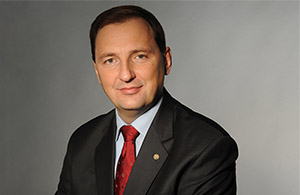





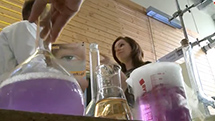

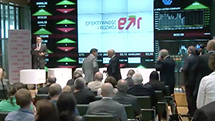




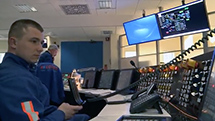

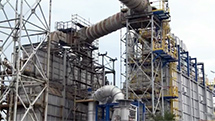

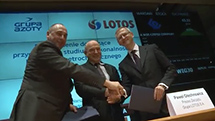
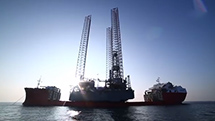
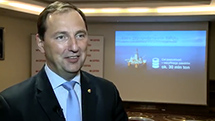
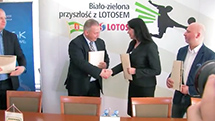
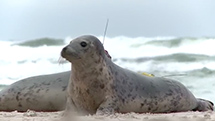
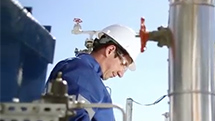

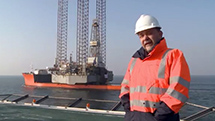
 E-mail
E-mail Facebook
Facebook Google+
Google+ Twitter
Twitter